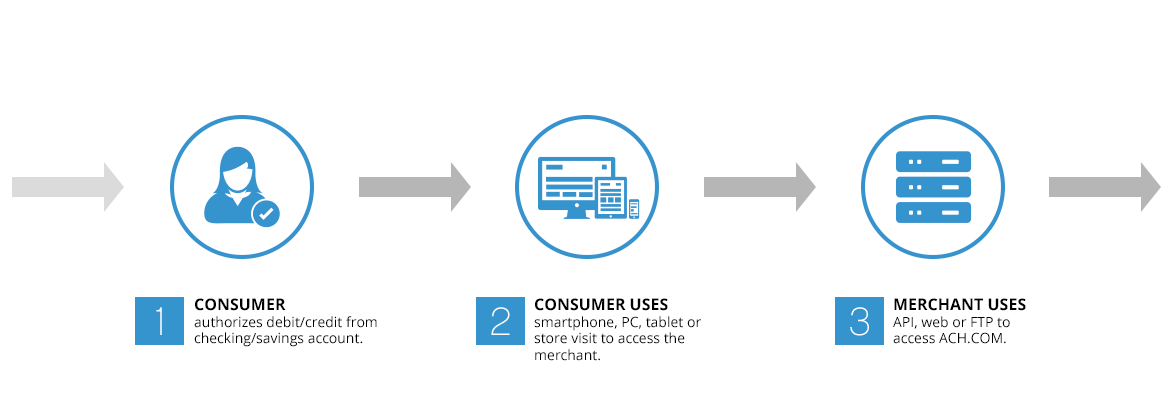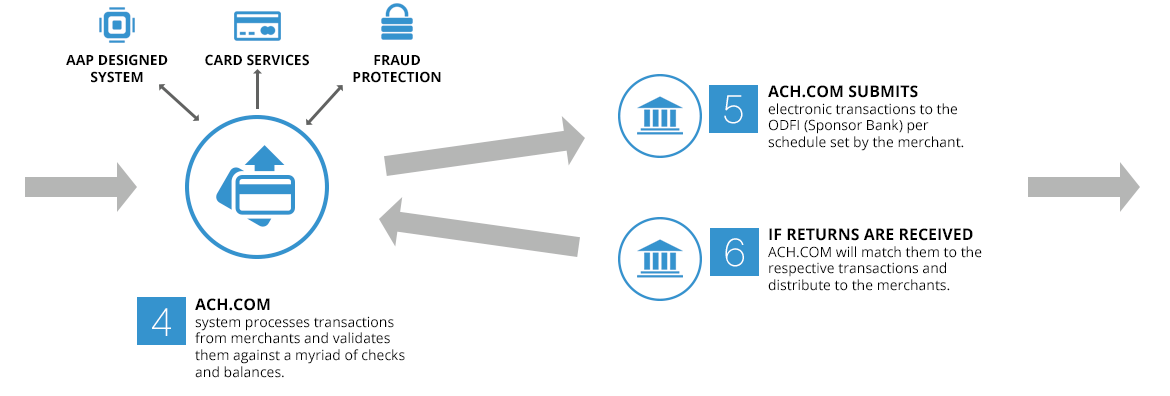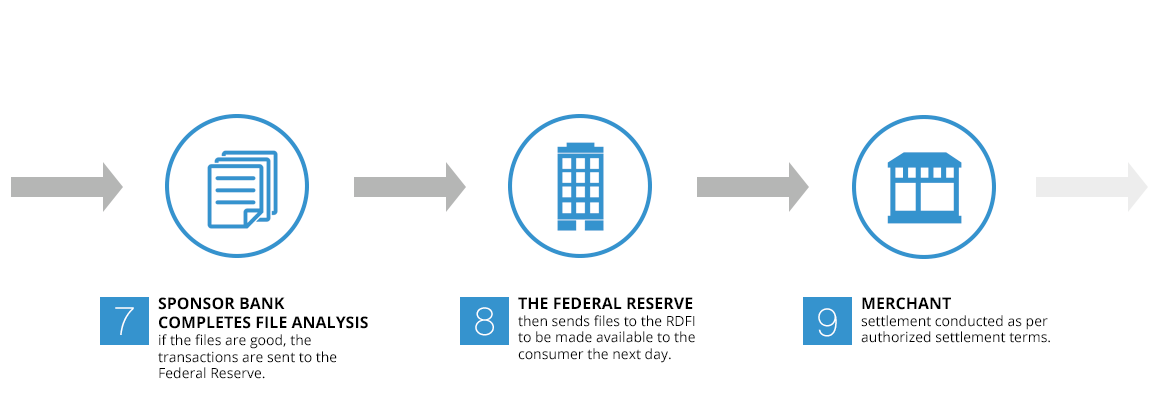ACH payments
ACH stands for Automated Clearing House, these are electronic transactions using bank account and routing number to transfer money as opposed to credit cards.
Use Cases
- Commonly used for transactions such as depositing payroll, bills/utilities, property management.
- Merchants who want to offer additional payment methods to their customers.
Presentment Types
- TEL (Telephone Payments) - The customer provides their bank account and routing number to the Merchant over the phone to make an ACH payment.
- WEB (eCommerce/Shopping Cart Environment) - The customer enters their bank account and routing number on the Merchant's site to make an ACH payment.
- PPD (Pre-Arranged Payment) - The customer provides their bank account and routing number to the merchant in person for a payment or recurring ACH payments.
- CCD (Corporate Cash Deposit) - The company provides their bank account and routing number to the Merchant for a payment or recurring ACH payments.
How it works



Things to Keep in Mind
Although ACH payments are traditionally less expensive, they have a longer funding time frame and higher risk to reject (which can occur 3-7 days after the transaction is made) compared to a credit card which gives you a valid authorization real-time and quicker funding. The fact that an ACH transaction could reject that far away from the initial transaction date can potentially pose risk for merchants who ship goods or offer “cash and carry”.
Making an ACH Transaction
Before making ACH charges, you need to sign into your account and activate the ACH.COM app.
Step 1
- Setup a POST /payment with the ACH indicator type you want to use (CCD, PPD, TEL, or WEB).
Step 2
- Set HTTP request method to POST and use /payment route
Step 3
- Supply the request with your username and password. Make sure it's in base-64 encryption in the Authorization header field.
- Set Content-Type to Application/JSON
Step 4
- In the bankAccount object, we provide the following fields as seen in this payload:
{
"merchantId": 4xxxxxxxxx0,
"tenderType": "ACH",
"paymentType": "Sale",
"authOnly": false,
"isAuth": true,
"isSettleFunds": true,
"entryClass": "CCD",
"bankAccount": {
"type": "Checking",
"routingNumber": "0xxxxxxx2",
"accountNumber": "1xxxxxxxxxx9",
"alias": "test",
"name": "test"
},
"amount": 0.01
}
- If you would like to get the response object, you should supply echo=true as a URL parameter. This is useful as it keeps the user from having to use a GET call to see the response object information.
Step 5
- You should expect to receive an HTTP 201 code for the response if they payment posted correctly, and the status field should set to Approved.
Updated over 5 years ago
